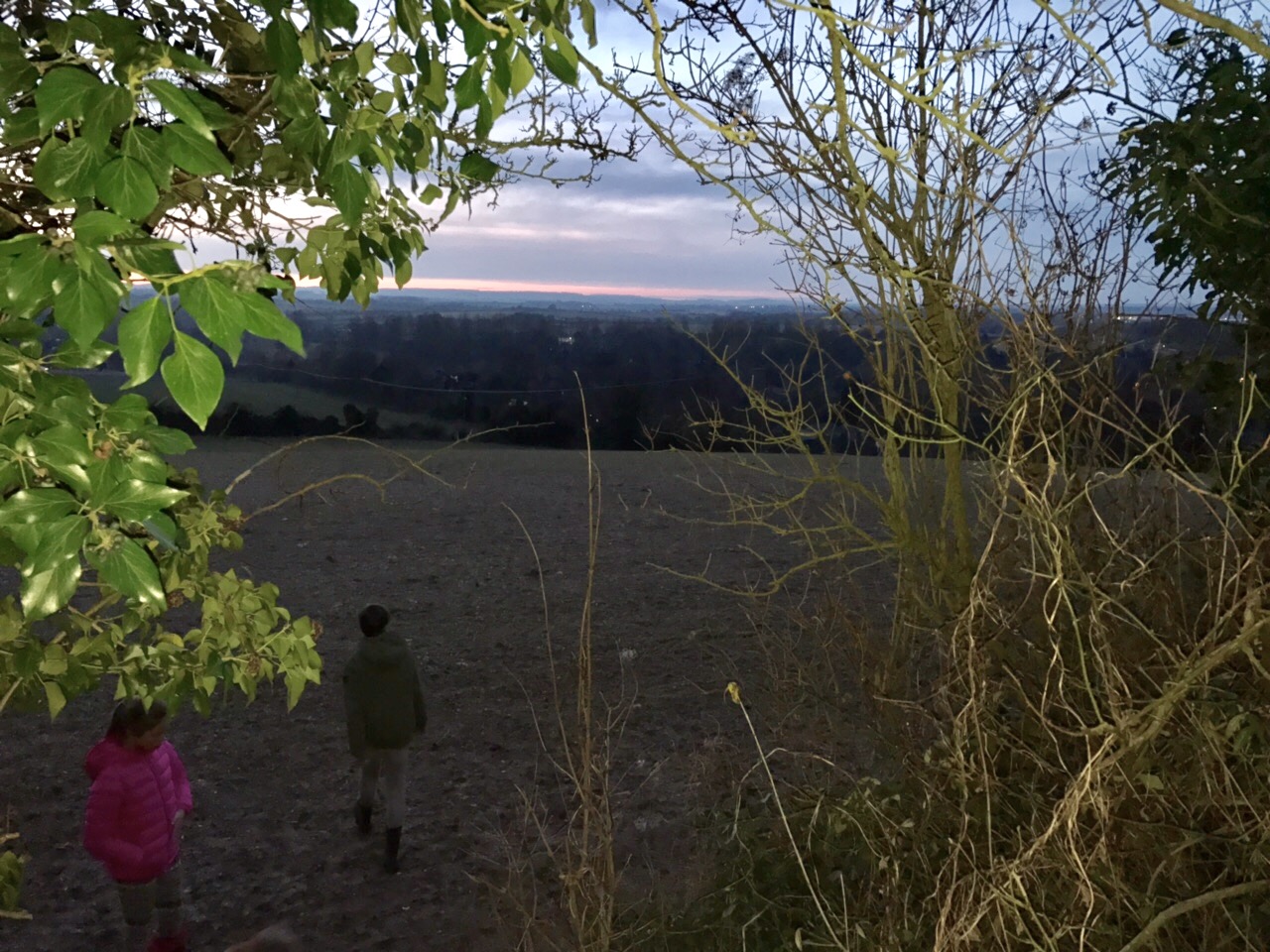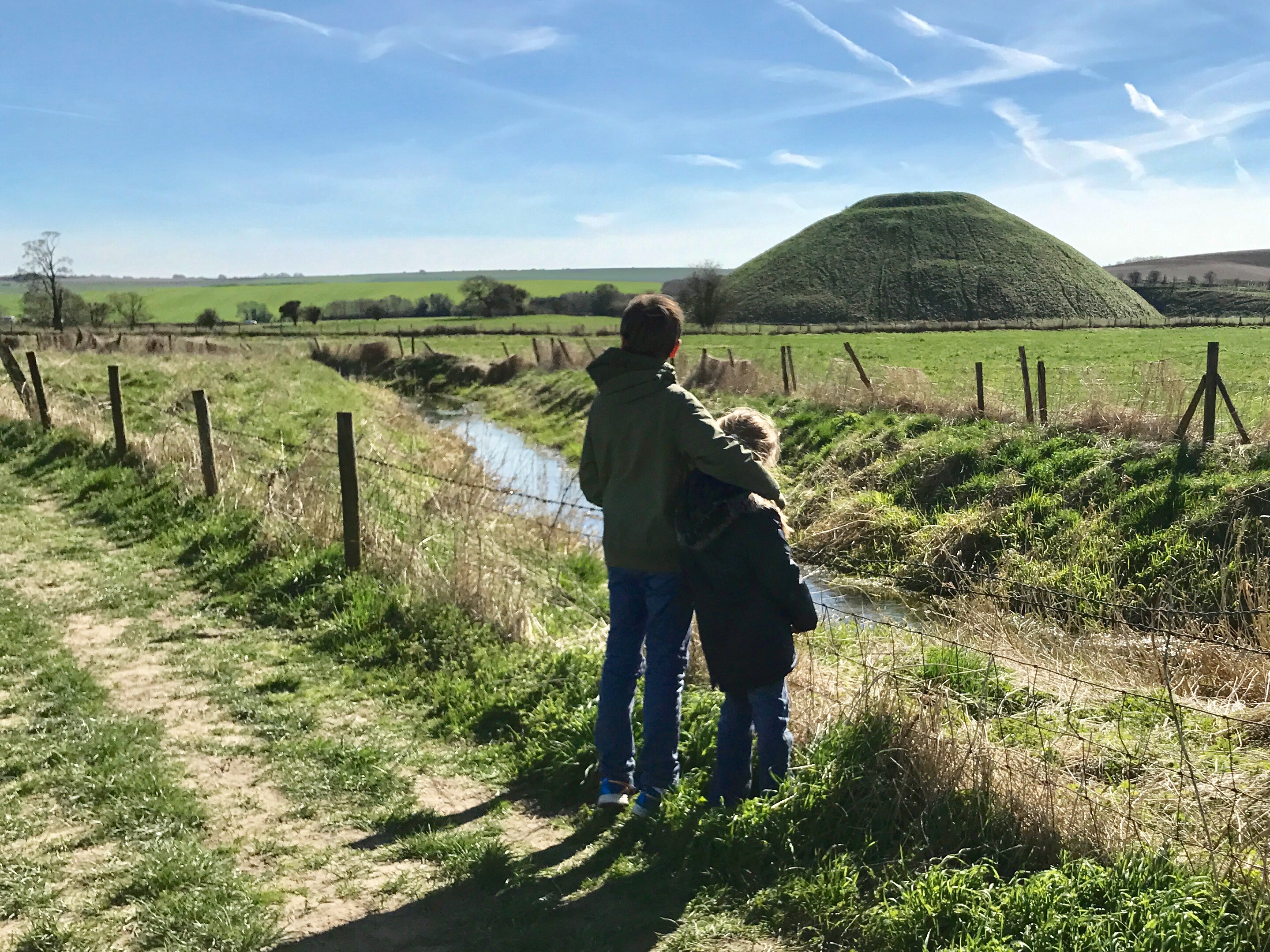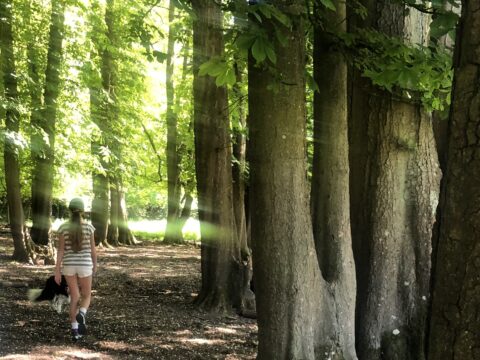
Start – Inkpen, End – Kingsclere, Distance – 13 miles, Difficulty – moderate
https://www.hants.gov.uk/thingstodo/countryside/walking/wayfarerswalk
So, having completed the Clarendon Way, where to next on our long distance walks? We chose the Wayfarer’s Walk, a 70 mile long route, beginning at Inpen Hill in Berkshire on the top of the North Wessex Downs travelling south and finishing on the coast of Hampshire at Emsworth. It was first introduced in 1981 by the Principal Officer for Rights of Way in Hampshire, Bill Bide, parts of it following ancient tracks used by farmers as they drove their sheep to fairs along the way (animal fairs were held at New Alresford and Farnham).

Once again we decided to use both cars, parking one at the end location of the day’s walk and parking the other at the off road car park at the start of the walk. We chose to walk on a late August day in 2020; blustery with grey clouds scudding across the sky, but no forecast of rain. The walk’s starting location has a gruesome history – perfect for piquing everyone’s interest. At the summit of Inkpen Beacon we had spectacular views across the counties of Berkshire, Wiltshire, Hampshire and Oxfordshire and we also find Combe Gibbet, a 7.6m high double Gibbet. It stands on a Neolithic long-barrow, so the area has seen a fair amount of history! Combe Gibbet is a rare double gibbet erected as a warning to the local population in 1676. The story behind it is that in 1676 Martha Bromham and her son, Robert, were murdered by her farm labourer husband, George (from Combe) and his lover, Dorothy Newman, a widow from Inkpen. They stood trial at Winchester, found guilty of murder and ordered to be hanged “in chaynes near the place of the murder”. Records suggest that a dispute arose as to who would be liable for the cost of the hanging, which would include the building of a double gibbet. In the end the cost was split between Combe and Inkpen. The public hanging took place in Winchester and the bodies then moved to Combe Gibbet, where they were hung “in chaynes” either side of the double gibbet. The original gibbet has been replaced several times due to rotting, weather (it was even struck by lightening!0 and vandalism. The current gibbet was erected in 1992. It is pretty gruesome but made for some fascinating discussions at the beginning of our walk!

The trail then led us over Walbury Hill, the highest point in South East England at 297 metres. Once again no one else seems to be about and as we walked along the ridge the views are stunning. We continued across farmland and small woodlands before walking around Highclere Castle. The Grotto Lodge is our only view of the castle buildings whose park was laid out by Capability Brown in the 17702 and has been made more famous as the location of Downton Abbey. We passed Beacon Hill, the location of the grave of the 5th Earl of Carnarvon, of Tutankhamun fame, before descending to the A34.

Before we crossed via a permissive path going underneath the road, we found a memorial stone at the edge of the Seven Barrows (barrows are Bronze Age burial mounds) field in memory of Geoffrey de Havilland’s first successful flight on 10 September 1910. After WW1 Geoffrey de Havilland set up the de Havilland Aircraft Company that became the de Havilland Group which was eventually taken over by Hawker Siddeley in 1960. When Geoffrey died in May 1965, his ashes were scattered over Seven Barrows where he had made his first flight. It would be so easy to walk past this small stone monument close to the busy A34. It’s worth stopping, gazing at the skies and just thinking about what an extraordinary man de Havilland must have been.

After crossing under the road we walked up Ladle Hill (another hillfort with scattered tumuli) which offered yet more panoramic views before walking along Watership Down, made famous by Richard Adams in his book of the same name. We chat about the book – I still have my original Puffin copy and can clearly remember the trauma of reading the tragic story as a child and its haunting tale has stayed with me. I then discover that I subsequently traumatised the Boy when he watched the animated series!! Interestingly, the journalist Ed Power of The Independent in 2012 described the film as a “classic” but which “arguably traumatised an entire generation”. Obviously I’m not alone and I love the fact that it is still making an impact on society today – in an Opinion piece by Ross Douthat in the New York Times in 2019 he believed “that the book has real relevance to the crisis of the liberal order in the Western world,” and just last year a graphic novel version was published focusing more on the theme of hope within the book than that of peril – unlike the animated film. I think that I will go back and read it again. Anyway, despite some of the terrifying storylines, the real Watership Down is beautiful, the top thickly wooded – easy to imagine vast warrens beneath the earth.

Finally, the last part of this leg began to have more walkers about and took us to a plateaued area and past the gallops at Kingsclere – this is horse racing country, where horses have been trained since the 18th Century and where the 1971 Epsom Derby winner, Mill Reef, was trained by Ian Balding, father of broadcaster and author, Clare Balding.

And that was it, the end of another day of walking and discovery as we returned to our car at Whitehill car park – the Littlest looking much happier at the end of this walk; longer, stronger legs I think!





